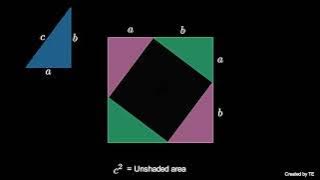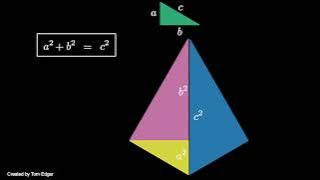Articles containing proofs | Theorems in projective geometry | Euclidean plane geometry
Pappus's hexagon theorem
In mathematics, Pappus's hexagon theorem (attributed to Pappus of Alexandria) states that * given one set of collinear points and another set of collinear points then the intersection points of line pairs and and and are collinear, lying on the Pappus line. These three points are the points of intersection of the "opposite" sides of the hexagon . It holds in a projective plane over any field, but fails for projective planes over any noncommutative division ring. Projective planes in which the "theorem" is valid are called pappian planes. If one restricts the projective plane such that the Pappus line is the line at infinity, one gets the affine version of Pappus's theorem shown in the second diagram. If the Pappus line and the lines have a point in common, one gets the so-called little version of Pappus's theorem. The dual of this incidence theorem states that given one set of concurrent lines , and another set of concurrent lines , then the lines defined by pairs of points resulting from pairs of intersections and and and are concurrent. (Concurrent means that the lines pass through one point.) Pappus's theorem is a special case of Pascal's theorem for a conic—the limiting case when the conic degenerates into 2 straight lines. Pascal's theorem is in turn a special case of the Cayley–Bacharach theorem. The Pappus configuration is the configuration of 9 lines and 9 points that occurs in Pappus's theorem, with each line meeting 3 of the points and each point meeting 3 lines. In general, the Pappus line does not pass through the point of intersection of and . This configuration is self dual. Since, in particular, the lines have the properties of the lines of the dual theorem, and collinearity of is equivalent to concurrence of , the dual theorem is therefore just the same as the theorem itself. The Levi graph of the Pappus configuration is the Pappus graph, a bipartite distance-regular graph with 18 vertices and 27 edges. (Wikipedia).



















